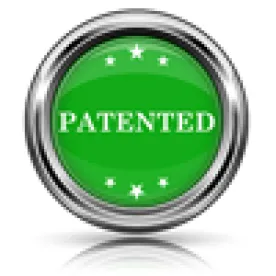Addressing patent eligibility at the motion to dismiss stage of a case, the US Court of Appeals for the Federal Circuit vacated a district court’s grant of a motion to dismiss, finding that the district court improperly failed to accept as true the patent owner’s factual allegations that the asserted claims were directed to an inventive concept. Cellspin Soft, Inc. v. Fitbit, Inc., Case No. 18-1817, -1819, -1820, -1821, -1822, -1823, -1824, -1825, -1826 (Fed. Cir. June 25, 2019) (O’Malley J).
Cellspin owns four patents that relate to connecting a data capture device (e.g., a digital camera) to a mobile device so that a user can automatically publish content from the data capture device to a website. Cellspin filed more than a dozen cases alleging infringement of the asserted patents, including cases against Fitbit, Moov, Nike, Fossil, Canon, GoPro, Panasonic, JK Imaging and Garmin. After being served with the complaint, the defendants filed a motion to dismiss, arguing that the asserted patents were ineligible for patent protection under 35 USC § 101. The district court granted the motion based on the Supreme Court of the United States’ two-step framework for analyzing patent eligibility articulated in Mayo v. Prometheus and Alice v. CLS (IP Update, Vol. 17, No. 7). The district court found that at step one, the asserted claims were directed to the abstract idea of “acquiring, transferring, and publishing data and multimedia content on one or more websites,” and at step two, the asserted claims did not recite an inventive concept.
After the district court granted the motion, it awarded attorneys’ fees to the defendants. In finding the case exceptional, the district court found that:
- There is no presumption that granted patents are eligible under §101.
- Cellspin litigated the case aggressively and refused to stay discovery pending resolution of the §101 motion.
- Cellspin failed to litigate a “test case” against one defendant and instead chose to aggressively file and pursue 14 lawsuits simultaneously.
- Cellspin amended its complaint days before the scheduled hearing on the motion to dismiss.
Cellspin appealed.
The Federal Circuit vacated the district court’s dismissal, finding that while the asserted claims were directed to an abstract idea, the district court erred in determining there was no inventive concept because it ignored allegations that, when properly accepted as true, precluded granting a motion to dismiss. Starting with step one of the Mayo/Alice framework, the Federal Circuit found that the asserted claims were drawn to the idea of capturing and transmitting data from one device to another, and the Court has consistently held that these types of claims are directed abstract ideas.
Turning to step two of the Mayo/Alice framework, the Federal Circuit found the district court improperly discounted Cellspin’s allegations that its application of capturing, transferring and publishing data was unconventional. For instance, Cellspin alleged that prior art devices, which included a “capture” device with built-in mobile wireless internet, were bulky and expensive and required users to purchase a separate cellular service. Cellspin asserted that its invention was unconventional because it separated the steps of capturing and publishing so that each step was performed by a different device linked via a wireless paired connection, thus resulting in an improvement over the prior art. Cellspin also alleged that its specific ordered combination of elements was inventive because the prior art did not establish a paired connection before transmitting data, as was required by the asserted claims. The Court found that if it accepted Cellspin’s allegations as true, as it must do at the motion to dismiss stage, the asserted claims recited a specific and plausibly inventive way of arranging devices and using protocols rather than the general idea of capturing, transferring and publishing data. The Court thus vacated the district court’s dismissal and remanded for further proceedings.
The Federal Circuit also found that the district court’s error in granting the motion to dismiss necessitated vacatur of the attorneys’ fees award. However, in the interest of judicial economy, the Court addressed certain errors in the district court’s analysis. The Court found that patents granted by the US Patent and Trademark Office are presumed valid under § 101, and there was no need for Cellspin to file a “test case” to determine the validity of the asserted patents. The Court also found that Cellspin’s amended complaint filing was timely under the district court’s scheduling order and further justified in light of two Federal Circuit decisions that had issued weeks earlier. Accordingly, the Court found that it would be erroneous to consider these factors in determining whether the case was exceptional.



 />i
/>i

